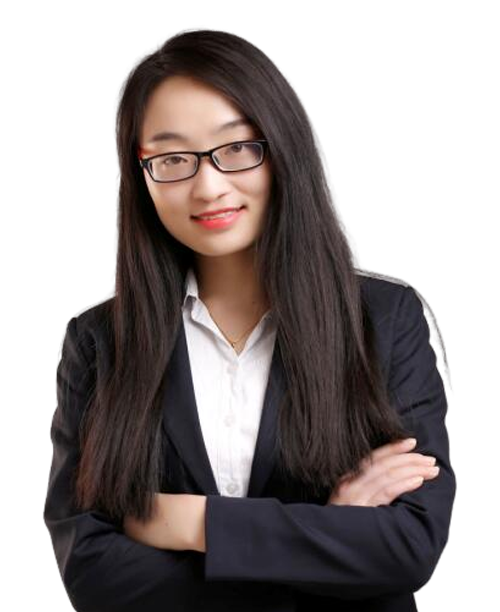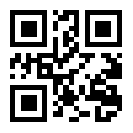Introduction to US Patent Applications for Overseas Patent Applications
Release Date:2024-12-27 Number of views:103
In the context of globalization and knowledge economy, technological innovation capability has become the most critical factor determining a country's comprehensive strength and economic development momentum, and intellectual property rights can largely reflect the level of technological innovation capability, thus gradually developing into a strategic resource for various countries. As one of the main components of intellectual property, patents have become one of the key factors determining the success of enterprises in market competition. Therefore, increasing the intensity of patent applications, formulating reasonable patent protection and layout strategies, is crucial for improving the core competitiveness of enterprises, occupying the market or maintaining a monopoly position, and enhancing the brand image of enterprises.
Due to the territorial nature of patent protection, if an applicant wants to obtain patent protection in other countries, they need to apply for and layout corresponding patents in the corresponding country. Among them, as one of the main export markets for domestic enterprise products, understanding the US patent application system is of great significance in helping enterprises better obtain patent protection in the United States.
1、 Ways/means of applying for US patents
Like most countries, domestic companies have two main ways to apply for US patents: the Paris Convention and the PCT. However, it should be noted that there are also two ways to enter the United States through the PCT route:
(1) 371 pathway: entering the US national phase through the traditional PCT pathway, which belongs to the national phase of PCT applications and is still subject to the restrictions of PCT regulations. For example, except for some formatting modifications, the submitted patent application text generally needs to be consistent with the PCT international publication text. Even if the application text is modified, it cannot add new content that is not recorded in the original application document, that is, it cannot exceed the content recorded in the original application document; At the same time, when applying for a US patent in the PCT national phase, it will only officially enter the national phase examination after 30 months from the priority date. Even if PPH accelerated examination is processed, it will still be accepted after 30 months, resulting in a relatively slow patent examination cycle.
(2) BY-PASS pathway: Refers to the bypass continuation method, in which entering the United States through this method is equivalent to using a PCT international application as a parent case, and then applying for a continuation based on this parent case in the United States. Therefore, the patent applied for in this way is equivalent to a local application in the United States, and its examination follows the requirements of the US Patent Examination Guidelines, without being restricted by PCT regulations.
Specifically, through the BY-PASS approach, on the one hand, applicants can modify the text of patent applications entering the United States to make their claims comply with the requirements of US patent law, thereby reducing the number of possible subsequent examination opinions issued; At the same time, new content can be added to the specification to better support the scope of protection of the claims or enhance the creativity of the patent; On the other hand, applicants can also expedite the patent examination process by applying for Track One or PPH, without being limited by the 30 month priority period of the traditional 371 pathway.
Therefore, when applying for a US patent through the PCT pathway, the applicant can consider various factors such as the prospect of patent authorization, examination period, and cost to choose between the traditional 371 pathway or BY-PASS pathway to enter the United States.
2、 Documents required for filing a US patent application
To submit a US patent application, the following documents are mainly required:
(1) English translation of patent application text;
(2) Power of attorney;
Similar to the patent application system in China, if a domestic applicant wants to apply for a US patent, they need to entrust a US agency to handle the relevant patent application matters, so a power of attorney is required.
(3) Inventor's Declaration;
(4) Transfer declaration;
Due to the inventor system in the United States, when the patent applicant is a legal entity such as a company, it is necessary to submit a transfer statement signed by all inventors agreeing to transfer the patent application rights to the company.
3、 Substantive examination of US patent applications
Both US patent applications and Chinese invention patent applications require substantive examination. In terms of process, under normal circumstances, a US patent application usually issues two examination opinions: NOA (Non Final Examination Opinion) and FOA (Final Examination Opinion). After FOA's response, if the patent application is still considered ineligible for authorization and rejected, the applicant can request the examiner to continue the examination of the patent application by filing a Request for Further Examination (RCE) and paying the corresponding official fees.
It should be noted that in China, a request for reexamination after a patent application is rejected can only be made once, while in the United States, there is no limit to the number of times RCE can be filed. As long as the corresponding official fees are paid, the request for further examination can be made.
In addition, due to the differences between the patent examination system in the United States and China, their patent applications may encounter different problems in the substantive examination process, mainly including the following two aspects:
(1) Restrictive requirements
Restriction Requirement (RR) is a common issue in the US patent application process, often encountered by many domestic applicants in NOAs when applying for US patents. Restrictive requirements are similar to the singularity of Chinese patents, mainly aimed at reducing the search burden on examiners.
According to Section 1.475 (a) of Title 37 of the United States Code of Federal Regulations, a national phase application in the United States should involve only one invention or a set of interrelated inventions that form a single overall inventive concept. The requirement of invention unity should only be met when there is a technical relationship involving one or more identical or corresponding special technical features between a group of inventions that are required to be protected in the national phase application. Special technical features "refer to the technical features that limit the contribution of each claimed invention as a whole to existing technology. Among them, common combinations of inventions that meet the requirement of singularity mainly include:
(1) A product and a process specifically suitable for manufacturing the product; perhaps
(2) A product and its usage process; perhaps
(3) A product, a process specifically suitable for manufacturing the product, and the purpose of the product; perhaps
(4) A process and equipment or device specifically designed to implement the process; perhaps
(5) A product, a process specifically designed for manufacturing the product, and a device or means specifically designed to perform the process.
Therefore, when a US patent application claims multiple different subjects that do not meet the requirement of patent unity mentioned above, it usually receives examination opinions regarding restrictive requirements.
In the specific practical process, Chinese examiners usually examine the creativity of ownership elements in a patent application to determine its authorization prospects. Only on the basis of meeting the patent authorization prospects, will they examine whether the unity requirements are met between different topics. In the United States, even if the later independent claims refer to the earlier independent claims, if the earlier independent claims do not have creativity, there are no identical or corresponding special technical features between the two, and the examiner will directly issue an examination opinion on the restrictive requirements, requiring the applicant to select one of the sets of claim themes for examination.
As mentioned earlier, the examination of US invention patents usually issues two examination opinions. Therefore, when the examiner raises an examination opinion on restrictive requirements in NOA, the applicant usually only defends the creativity of the patent in the final FOA defense process. If the defense is not recognized by the examiner, another examination request needs to be filed through RCE or divisional action, which will lead to the initiation of a new examination process and result in new costs. Meanwhile, American lawyers usually charge by the hour, so the more procedures and defenses there are, the higher the corresponding foreign lawyer fees.
Therefore, when applying for a US patent, the applicant can consider whether to make corresponding modifications to the claims of the patent when entering the United States, taking into account the scope of protection, prospect of authorization, and patent application fees, in order to avoid issuing restrictive examination opinions as much as possible.
In addition, when the examiner requests restrictions on product or equipment claims and process claims, if the applicant chooses to focus on product/equipment claims and all product/equipment claims are authorized after examination, then the applicant still has the hope to add withdrawn process claims.
(2) Creative opinions
Like Chinese patents, creativity examination is also a major content of US patent examination. However, based on practical experience, there are certain differences in the evaluation criteria and standards for creativity during US patent examination compared to China. In the United States, examiners have more lenient and objective criteria for evaluating creativity.
At the same time, it should be noted that in the United States, even if different topics meet the requirement of singularity in US patent law, and one of the topics is inventive, it does not mean that the other topics are also inventive and can be granted a patent.
For example, if a patent application contains both a preparation process theme and a product theme prepared using that process, Chinese patent examiners usually assume that the product theme prepared using the above process also has creativity, as it meets the requirement of singularity and the preparation process is creative. As long as there are corresponding technical features or formal citation relationships between the two, Chinese patent examiners usually do not conduct additional examination on the creativity of the product subject matter.
In the process of patent examination in the United States, on the basis of the creativity of the preparation process, the examiner will still examine whether the product technical features defined in the corresponding product claims are prior art. Although the product theme is limited and defined by the method theme, the determination of patentability is based on the product itself, and the patentability of a product does not depend on its production method. Therefore, if the technical features defined in the product rights belong to the existing technology, that is, cannot reflect the difference between the product prepared by the above process and the existing technology product, then the subject matter of the product is still considered unpatentable.
4、 Summary
Having a deep understanding of the US patent application process and examination system can help companies increase the likelihood of patent authorization, accelerate the examination cycle, or reduce examination costs by selecting appropriate application channels or making corresponding modifications to application documents, thereby better obtaining US patent protection.












 Nanjing
Nanjing Suzhou
Suzhou Changzhou
Changzhou Hefei
Hefei Hangzhou
Hangzhou